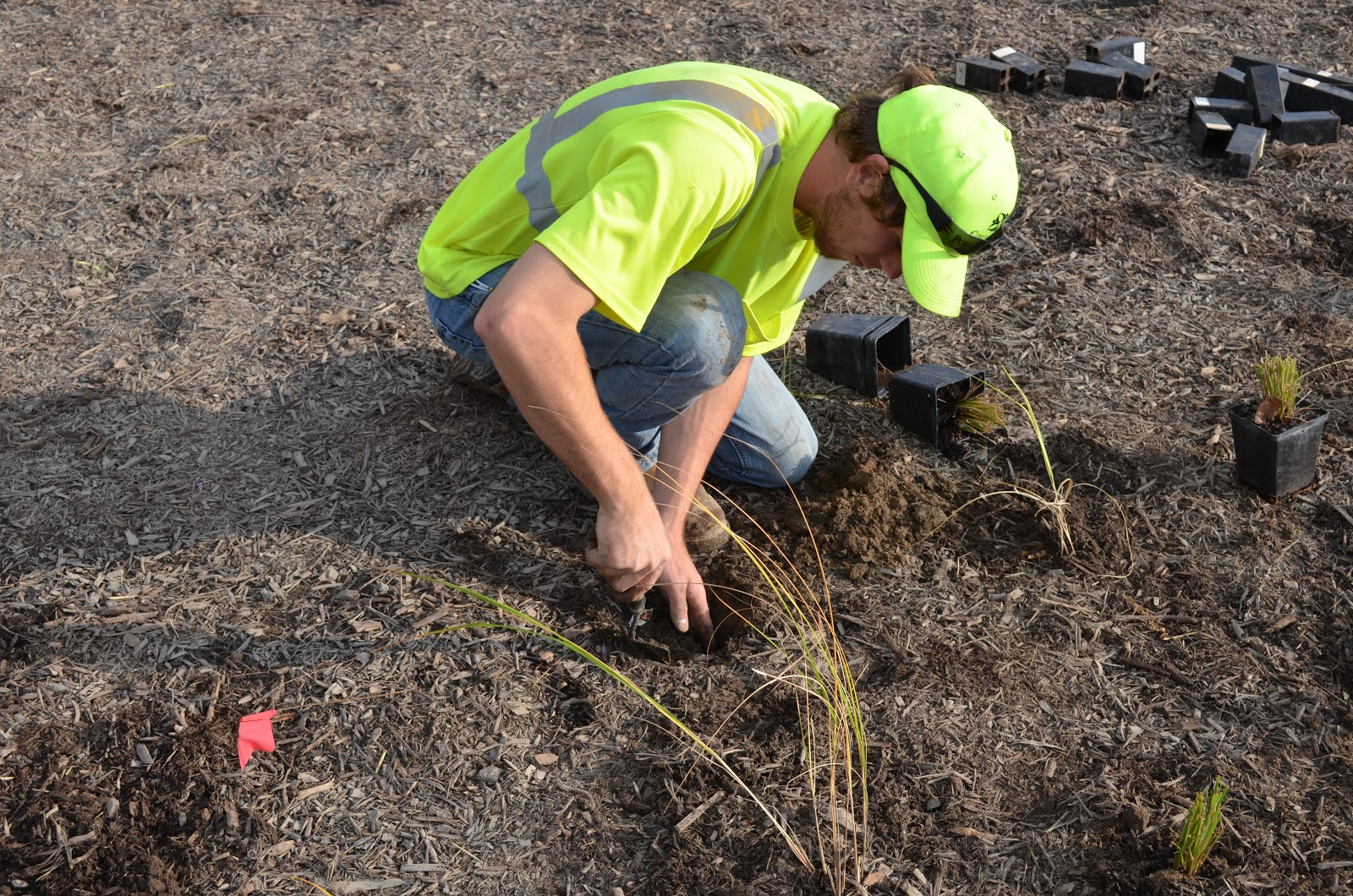Work to complete the Bioretention and Raingarden started on a sunny, 78 degree morning. By lunch time, the temperature was dropping quickly as a cold front blew through. The folks volunteering to plant hung in there to get more than 2000 plants in the ground as the temperature dropped more than 25 degrees and it started to rain. Thanks to the hearty Public Works volunteers below who helped out.
The final phase of construction for the bioretention and raingarden is the most critical: installation of native plants. Native plants are better able to withstand the brutal extremes of Missouri weather. Native plants also tend to root more deeply insuring that stormwater runoff has more avenues to infiltrate into the ground below. Native plants will use stormwater runoff and some of the nutrients that come with it, reducing the negative impacts of urban stormwater runoff from our downstream waterways. Keeping excess runoff, sediment, nutrients and other pollutants in the bioretention and raingarden cells keeps our streams healthier and cleaner.
Keep posted for our time lapse video and more information on the bioretention construction.
 | 











No comments:
Post a Comment